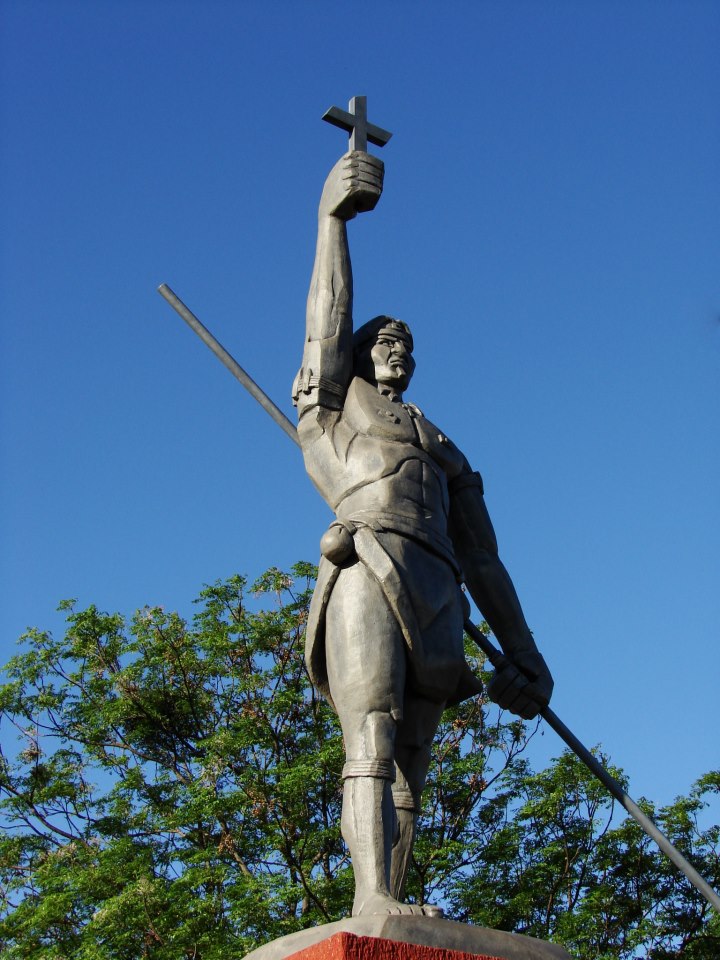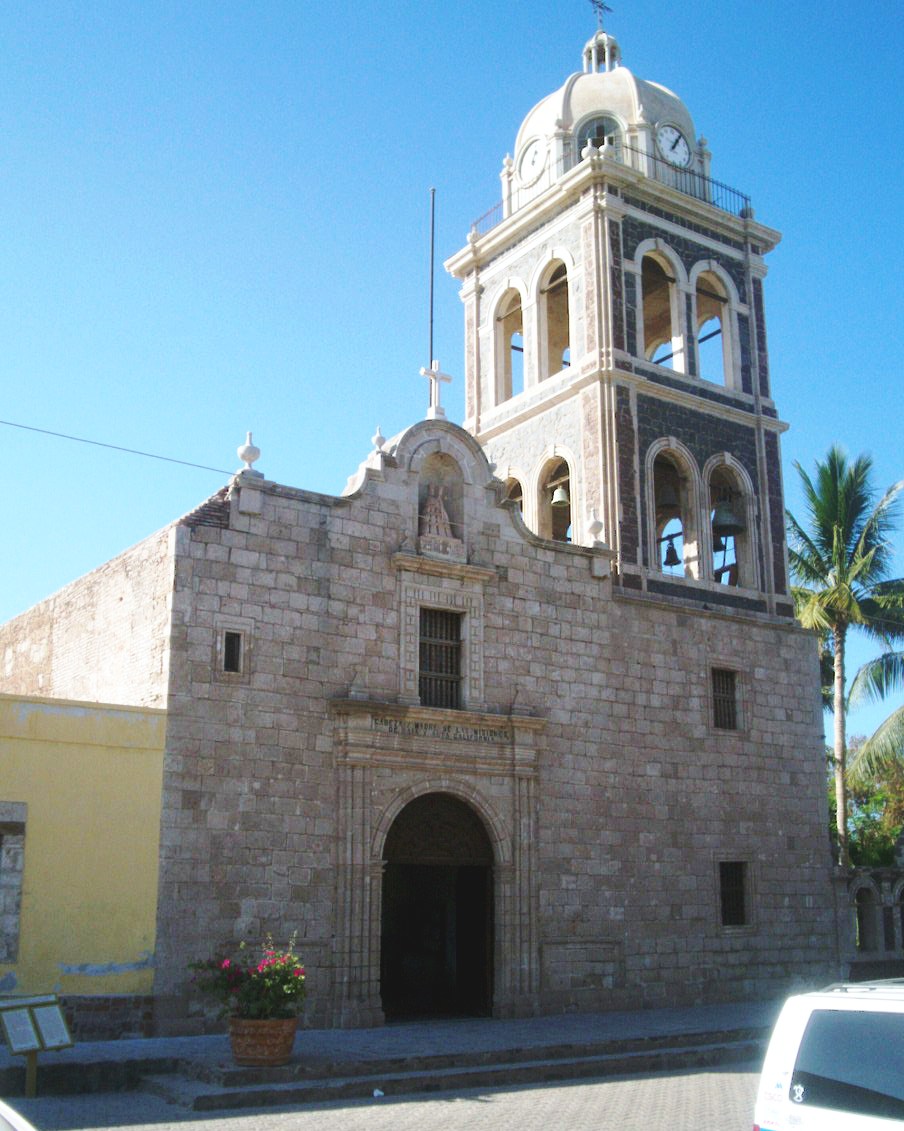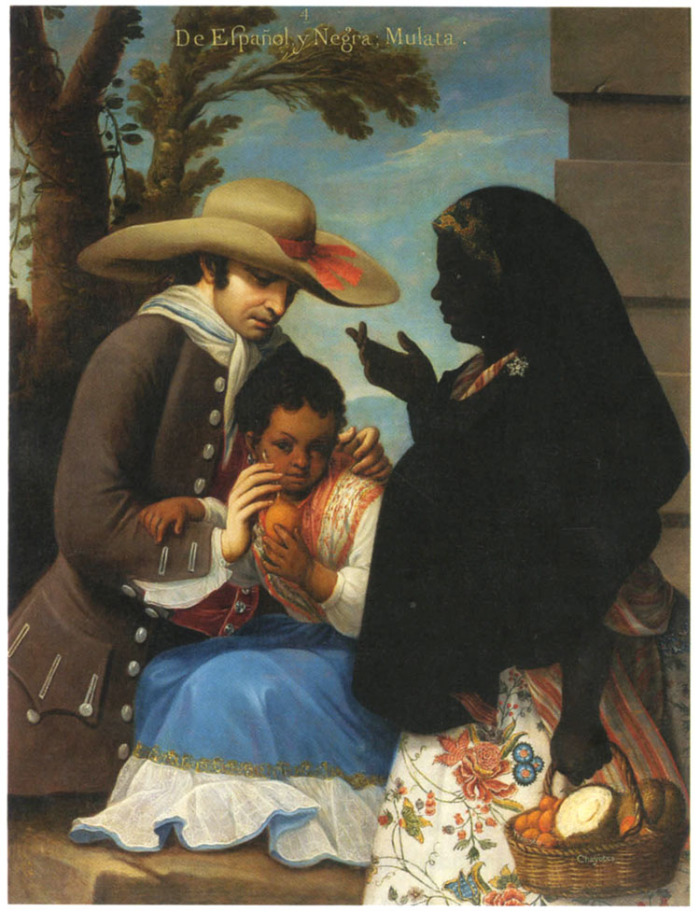|
Bandeirante People
The ''Bandeirantes'' (), literally "flag-carriers", were slavers, explorers, adventurers, and fortune hunters in early Colonial Brazil. They are largely responsible for Brazil's great expansion westward, far beyond the Tordesillas Line of 1494, by which Pope Alexander VI divided the new continent into a western, Castilian section, and an eastern, Portuguese section. The ''bandeirantes'' were also known as Paulistas and Mamelucos. They mostly hailed from the São Paulo region, called the Captaincy of São Vicente until 1709 and then as the Captaincy of São Paulo. The São Paulo settlement served as the home base for the most famous ''bandeirantes.'' Some ''bandeirante'' leaders were descendants of first- and second-generation Portuguese who settled in São Paulo, but the bulk of their numbers was made of people of mameluco background (people of both European and Indian ancestries) and natives. Miscegenation was the norm in that society, and its initial family structur ... [...More Info...] [...Related Items...] OR: [Wikipedia] [Google] [Baidu] |
Domingos Jorge Velho
Domingos Jorge Velho (1641–1705) was one of the fiercest and most effective bandeirantes. He was born in Santana de Parnaíba, captaincy of São Paulo, to Francisco Jorge Velho and Francisca Gonçalves de Camargo. He was responsible for the repression of several indigenous nations in Bahia and especially Piauí, which he is reputed to have been the first colonist to explore. His greater fame, however, is due to his conquest of the Quilombo dos Palmares, in the hinterland of Alagoas, on behalf of João da Cunha Souto Maior, governor of Pernambuco. Velho accepted the assignment and, in 1694, with an army of amerindians and mamelucos, European Native American offspring, overran the fortified city of Macacos, on the Serra da Barriga mountain. According to the bishop of Olinda at the time, he did not speak Portuguese fluently but rather the língua geral, a lingua franca based on Tupian languages The Tupi or Tupian language family comprises some 70 languages spoken in South ... [...More Info...] [...Related Items...] OR: [Wikipedia] [Google] [Baidu] |
Spanish Empire
The Spanish Empire ( es, link=no, Imperio español), also known as the Hispanic Monarchy ( es, link=no, Monarquía Hispánica) or the Catholic Monarchy ( es, link=no, Monarquía Católica) was a colonial empire governed by Spain and its predecessor states between 1492 and 1976. One of the largest empires in history, it was, in conjunction with the Portuguese Empire, the first to usher the European Age of Discovery and achieve a global scale, controlling vast portions of the Americas, territories in Western Europe], Africa, and various islands in Spanish East Indies, Asia and Oceania. It was one of the most powerful empires of the early modern period, becoming the first empire known as "the empire on which the sun never sets", and reached its maximum extent in the 18th century. An important element in the formation of Spain's empire was the dynastic union between Isabella I of Castile and Ferdinand II of Aragon in 1469, known as the Catholic Monarchs, which in ... [...More Info...] [...Related Items...] OR: [Wikipedia] [Google] [Baidu] |
Viceroyalty Of Peru
The Viceroyalty of Peru ( es, Virreinato del Perú, links=no) was a Spanish imperial provincial administrative district, created in 1542, that originally contained modern-day Peru and most of the Spanish Empire in South America, governed from the capital of Lima. The Viceroyalty of Peru was officially called the Kingdom of Peru. Peru was one of the two Spanish Viceroyalties in the Americas from the sixteenth to the eighteenth centuries. The Spanish did not resist the Portuguese expansion of Brazil across the meridian established by the Treaty of Tordesillas. The treaty was rendered meaningless between 1580 and 1640 while Spain controlled Portugal. The creation during the 18th century of Viceroyalties of New Granada and Río de la Plata (at the expense of Peru's territory) reduced the importance of Lima and shifted the lucrative Andean trade to Buenos Aires, while the fall of the mining and textile production accelerated the progressive decay of the Viceroyalty of Peru. Even ... [...More Info...] [...Related Items...] OR: [Wikipedia] [Google] [Baidu] |
Quito
Quito (; qu, Kitu), formally San Francisco de Quito, is the capital and largest city of Ecuador, with an estimated population of 2.8 million in its urban area. It is also the capital of the province of Pichincha. Quito is located in a valley on the eastern slopes of Pichincha, an active stratovolcano in the Andes, at an elevation of , making it the second-highest capital city in the world.Contact Us " TAME. Retrieved on 14 March 2010. Quito is the political and cultural center of Ecuador as the country's major governmental, administrative, and cultural institutions are located within the city. The majority of transnational companies with a presence in Ecuador are headquartered there. It is also one of the country's two major industrial centers—the port city of |
Andean
The Andes, Andes Mountains or Andean Mountains (; ) are the List of mountain ranges#Mountain ranges by length, longest continental mountain range in the world, forming a continuous highland along the western edge of South America. The range is long, wide (widest between 18th parallel south, 18°S – 20th parallel south, 20°S latitude), and has an average height of about . The Andes extend from north to south through seven South American countries: Venezuela, Colombia, Ecuador, Peru, Bolivia, Chile, and Argentina. Along their length, the Andes are split into several ranges, separated by intermediate depression (geology), depressions. The Andes are the location of several high plateaus—some of which host major cities such as Quito, Bogotá, Cali, Arequipa, Medellín, Bucaramanga, Sucre, Mérida, Mérida, Mérida, El Alto and La Paz. The Altiplano, Altiplano plateau is the world's second-highest after the Tibetan plateau. These ranges are in turn grouped into three major di ... [...More Info...] [...Related Items...] OR: [Wikipedia] [Google] [Baidu] |
Rio Negro (Amazon)
The Rio Negro ( pt, Rio Negro, br ; es, Río Negro} "''Black River''"), or Guainía as it is known in its upper part, is the largest left tributary of the Amazon River (accounting for about 14% of the water in the Amazon basin), the largest blackwater river in the world, and one of the world's ten largest rivers by average discharge. Geography Upper course The source of the Rio Negro lies in Colombia, in the Department of Guainía where the river is known as the ''Guainía River''. The young river generally flows in an east-northeasterly direction through the Puinawai National Reserve, passing several small indigenous settlements on its way, such as Cuarinuma, Brujas, Santa Rosa and Tabaquén. After roughly 400 km the river starts forming the border between Colombia's Department of Guainía and Venezuela's Amazonas State. After passing the Colombian community of Tonina and Macanal the river turns Southwest. Maroa is the first Venezuelan town the river passes. 1 ... [...More Info...] [...Related Items...] OR: [Wikipedia] [Google] [Baidu] |
Guayrá
Guayrá (initially called Gobernación del Guayrá) was a historical region of the Spanish Empire, located in the Governorate of Paraguay, within the colonial Viceroyalty of Peru. The region is located in present-day Paraguay and Paraná. There are some conflicting etymologies for the origin of the name, with some claiming it was named after a cacique of the region whose name was Guayrá or Guayracá. Alternatively, the word might come from Guarani "kwa y ra" ("can not pass", "impassable") or even "guay ra" ("river that goes eyond). Geography The limits of Guayrá were the Iguazu River on the south, the Paraná River on the west, the Tiete (or Añemby) River to the north, and the line of the Treaty of Tordesillas to the east. The Tiete also marked the boundary between the Tupi and Guarani Indians. Aleixo Garcia crossed the region in 1522. In 1542, Alvar Nunez Cabeza de Vaca travelled through its southern reaches on his way to Asunción from Santa Catarina Island. History T ... [...More Info...] [...Related Items...] OR: [Wikipedia] [Google] [Baidu] |
Mameluco
''Mameluco'' is a Portuguese word that denotes the first generation child of a European and an Amerindian. It corresponds to the Spanish word ''mestizo''. In the 17th and 18th centuries, ''mameluco'' was also used to refer to organized bands of explorers from Colonial Brazil known as ''bandeirantes'', who roamed the interior of South America departing from São Paulo near the Atlantic Ocean to the interior of Brazil and Paraguay, invading Guarani settlements in search of slaves and gold. The word may have become common in Portugal in the Middle Ages, deriving from the Arabic, "Mamluk", "slave", commonly referring to soldiers and rulers of slave origin, especially in Egypt. See also *Amazonian Jews *Caboclo *Mestiço *Mixed-race Brazilian *Pardo Brazilians In Brazil, Pardo, ( or ) is an ethnic and skin color category used by the Brazilian Institute of Geography and Statistics (IBGE) in the Brazilian censuses. The term "''pardo''" is a complex one, more commonly used to refe ... [...More Info...] [...Related Items...] OR: [Wikipedia] [Google] [Baidu] |
Antonio Raposo Tavares
Antonio is a masculine given name of Etruscan origin deriving from the root name Antonius. It is a common name among Romance language-speaking populations as well as the Balkans and Lusophone Africa. It has been among the top 400 most popular male baby names in the United States since the late 19th century and has been among the top 200 since the mid 20th century. In the English language it is translated as Anthony, and has some female derivatives: Antonia, Antónia, Antonieta, Antonietta, and Antonella'. It also has some male derivatives, such as Anthonio, Antón, Antò, Antonis, Antoñito, Antonino, Antonello, Tonio, Tono, Toño, Toñín, Tonino, Nantonio, Ninni, Totò, Tó, Tonini, Tony, Toni, Toninho, Toñito, and Tõnis. The Portuguese equivalent is António (Portuguese orthography) or Antônio (Brazilian Portuguese). In old Portuguese the form Antão was also used, not just to differentiate between older and younger but also between more and less important. In Galicia ... [...More Info...] [...Related Items...] OR: [Wikipedia] [Google] [Baidu] |
Oscar Pereira Da Silva - Combate De Botocudos Em Mogi Das Cruzes, Acervo Do Museu Paulista Da USP
Oscar, OSCAR, or The Oscar may refer to: People * Oscar (given name), an Irish- and English-language name also used in other languages; the article includes the names Oskar, Oskari, Oszkár, Óscar, and other forms. * Oscar (Irish mythology), legendary figure, son of Oisín and grandson of Finn mac Cumhall Places * Oscar, Kentucky, an unincorporated community * Oscar, Louisiana, an unincorporated community * Oscar, Missouri, an unincorporated community * Oscar, Oklahoma, an unincorporated community * Oscar, Pennsylvania, an unincorporated community * Oscar, Texas, an unincorporated community * Oscar, West Virginia, an unincorporated community * Lake Oscar (other) * Oscar Township, Otter Tail County, Minnesota, a civil township Animals * Oscar (bionic cat), a cat that had implants after losing both hind paws * Oscar (bull), #16, (d. 1983) a ProRodeo Hall of Fame bucking bull * Oscar (fish), ''Astronotus ocellatus'' * Oscar (therapy cat), cat purported to predict ... [...More Info...] [...Related Items...] OR: [Wikipedia] [Google] [Baidu] |
Jesuit Reduction
Reductions ( es, reducciones, also called ; , pl. ) were settlements created by Spanish rulers and Roman Catholic missionaries in Spanish America and the Spanish East Indies (the Philippines). In Portuguese-speaking Latin America, such reductions were also called ''aldeias''. The Spanish and Portuguese relocated, forcibly in many cases, indigenous inhabitants (''Indians'' or ''Indios'') of their colonies into urban settlements modeled on those in Spain and Portugal. The word "reduction" can be understood wrongly as meaning "to reduce." Rather, the 1611 Spanish dictionary by Sebastián de Covarrubias defines ''reducción'' (reduction) as "to convince, persuade, or to order." The goals of reductions were to concentrate indigenous people into settled communities and to convert the Indians to Christianity and impose European culture. The concentration of the indigenous into towns facilitated the organization and exploitation of their labor. Reductions could be either religi ... [...More Info...] [...Related Items...] OR: [Wikipedia] [Google] [Baidu] |
Mulatto
(, ) is a racial classification to refer to people of mixed African and European ancestry. Its use is considered outdated and offensive in several languages, including English and Dutch, whereas in languages such as Spanish and Portuguese is not, and can even be a source of pride. A () is a female ''mulatto''. Etymology The English term and spelling ''mulatto'' is derived from the Spanish and Portuguese . It was a common term in the Southeastern United States during the era of slavery. Some sources suggest that it may derive from the Portuguese word (from the Latin ), meaning ' mule', the hybrid offspring of a horse and a donkey. The Real Academia Española traces its origin to in the sense of hybridity; originally used to refer to any mixed race person. The term is now generally considered outdated and offensive in non-Spanish and non-Portuguese speaking countries, and was considered offensive even in the 19th century. Jack D. Forbes suggests it originated in the Arabi ... [...More Info...] [...Related Items...] OR: [Wikipedia] [Google] [Baidu] |


.jpg)



